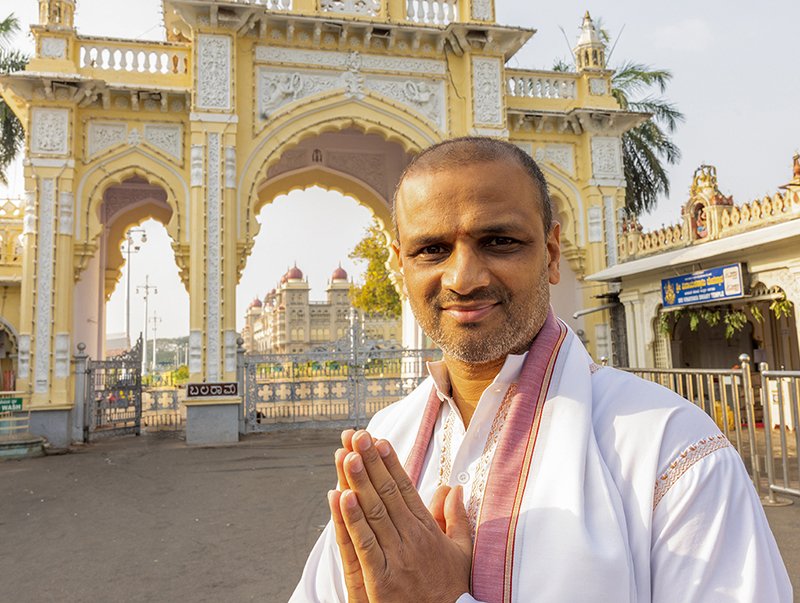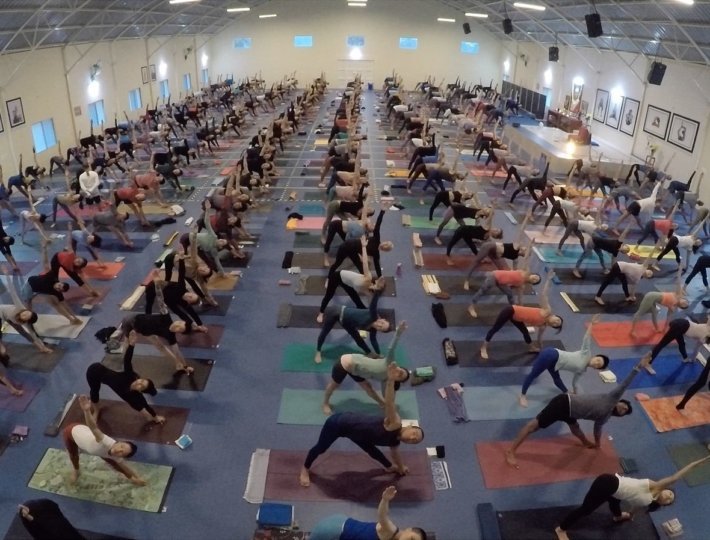When I was six years old a visiting Tibetan Buddhist teacher granted an audience to the kids of Buddhist practitioners in New York City. At the end, a few of us decided to take refuge, a vow that would mean we would, from then on, be Buddhists ourselves. There were three of us who opted into this vow. I sat next to Remy, and was told to repeat line-by-line after the Buddhist teacher. Finally he instructed us to say our name and that we took refuge in what is known as the three jewels of Buddhism. Remy and I said, “I, Remy, take refuge in the Buddha, the dharma, and the sangha.” “Wait wait wait,” the teacher said. “Say your own name. Go back.” Remy and I both once more said, “I, Remy, take refuge in the Buddha, the dharma, and the sangha.” “Wait!” the teacher said. “Try that again.” I once more messed up this simple recitation. He pointed at me. “Say your name,” he said. “Paul Rinzler,” I replied. He smiled and said, “Good enough. We’ll keep going.” At the end of the ceremony I received a Buddhist name, Lodro Thadel, which I believe to have been offered ironically given that I couldn’t even get my legal name right in the ceremony—it translates as “Boundless Intellect.” I’ve gone by Lodro for many years now.
There is a beautiful Buddhist text dating back to the fourteenth century known as the 37 Practices of a Bodhisattva. Bodhi can be translated from Sanskrit as “open” or “awake” while sattva can be translated as “being,” so it is an open-hearted being. A meditation master known as Ngulchu Thogme composed these verses so that we could live a full life with open-hearts, in order to be helpful to those around us and show up more fully for our day-to-day life. He has a verse that specifically explains the importance of taking refuge in the three jewels of Buddhism:
Themselves captives in the prison of samsara,
Whom can the worldly gods protect?
Therefore, to seek refuge in those who do not deceive,
the Three Jewels, is the practice of a bodhisattva
Here Ngulchu Thogme is saying that in order to pursue the Buddhist path toward enlightenment, or at least being an open-hearted being, we need to seek refuge in the Buddha (as a human who is an example for us), the dharma (his teachings that we can study in order to follow in his footsteps), and the sangha (the community who will support us along the way). He points to the “worldly gods” in this verse, referring to other beings who have lots of worldly possessions and wealth, but are themselves also caught in the cycle of suffering (a translation of that word “samsara”). He’s saying that even these worldly beings with all their amazing attributes can’t save us from our suffering, because they suffer too, just in somewhat different ways.
Related: A Breath Meditation for Beginners
Let’s look at these three jewels more closely. The first is the Buddha. The Buddha was a human being, like you and me, who was able to practice a very simple form of meditation and wake up in a very big way. When we talk about the Buddha leaving this cycle of suffering by attaining enlightenment that is what we are referring to: through meditation he was able to wake up his mind and heart in an incredibly vast way. The good news is that it’s not just him that can do that: we can too. We have everything we need to wake up to our inherent peace. In this way, when someone takes the refuge vow and becomes a Buddhist they are not saying they will pray to the Buddha as a god—he is an example of what we are capable of, and a very good one at that.
The second of the three jewels is the dharma, or teachings of the Buddha. After attaining enlightenment, the Buddha taught for many years. We can study these teachings, analyze them, and incorporate them into our life. The Buddha was big on examination—he said that we should not take anything he said at face value but explore these teachings and see if they actually meshed with our own experience. Having spent decades doing just that, I have to say that I’m a big fan of the dharma; it helps us live a life that is more meaningful, authentic, and full of love. When someone takes the refuge vow and becomes a Buddhist they are not saying they will memorize a lot of dogma but they are committing to a lifetime of exploring the words of the Buddha and how they apply to their day-to-day life.
The third of the three jewels is the sangha, or the community of Buddhist practitioners who will support you along your spiritual path. Sometimes thought of as the monastic community, in today’s world it includes lay practitioners as well. The idea here is that we are all in it together. It is sitting in a room full of meditators and knowing that you are likely not the only one bored, falling asleep, or extremely anxious. There are other people going through the exact same thing you are. There is great comfort in knowing that there are other people we can talk to about our spiritual journey, who can offer us advice and guidance when we get stuck along the way. When someone takes the refuge vow and becomes a Buddhist they are not saying they will go it alone in a dark cave in the woods—they are committing to a lifetime of practice within a supportive community.
These three jewels are foundational for the Buddhist path, and should be contemplated frequently. I personally believe that someone doesn’t have to take the refuge vow to call themselves a Buddhist. But it’s a bit like getting married, only to a specific spiritual path. You could, for example, meet someone and spark a romantic relationship and spend your lifetime with that person without getting married. But there is something to getting up in front of all of your friends and family and saying, “I’m in it with this person, for better or worse. I’m committed to standing by them.” There’s weight in taking on that vow. In the same vein, taking the refuge vow is standing in front of friends, family, or a supportive community and saying, “Okay. For the rest of my life I’m in it with this Buddhist stuff. I’m committed to meditating, contemplating, and exploring the example of the Buddha, these teachings and this community, to the best of my ability.” I highly recommend it, if you feel like you are committed to the Buddhist path. And I hope you get a less ironic name than I did.








Comments (0)